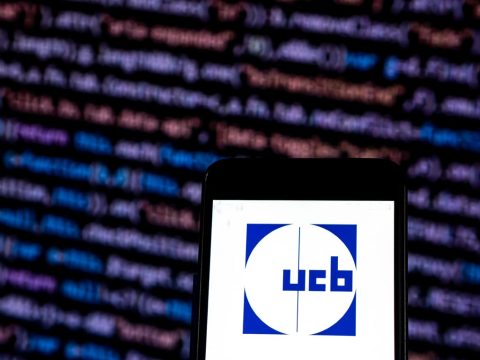Advertisment
ESC 2013 Report – Infections cause lower proportion of lead extractions than expected
Infections cause a lower proportion of lead extractions than expected, according to preliminary results from the ELECTRa Registry presented at ESC by Dr Maria Grazia Bongiorni from Italy.
The European Lead Extraction ConTRolled (ELECTRa) Registry is the first large prospective, multicentre, European controlled registry of consecutive patients undergoing transvenous lead extraction (TLE) procedures in European real world practice. It is carried out by the European Heart Rhythm Association (EHRA) and managed by the ESC’s EORP programme.1
Dr Bongiorni said: “The implantation rate of cardiovascular implantable electronic devices (CIEDs) continues to rise in most countries in Europe and in the US.2-6 The number of leads per patient is increasing due to a higher proportion of dual versus single chamber devices and an increase in implantations.”
She added: “Despite developments in technology and improvements in reliability, leads remain the weak point of CIED systems and in some cases may fail and require extraction. Extractions are also needed due to infections. In recent years, an increasing number of European centres have started performing TLE procedures7 and data is needed on appropriate indications, techniques, success rates, safety and follow-up.”
The primary aims of the ELECTRa Registry are to evaluate the acute and long-term safety of TLE and quantify major procedure related complications (including death) in acute and long-term follow-up. It is anticipated that over 100 centres from 25 countries will join the programme. Each centre will enroll consecutive patients undergoing TLE from November 2012 to January 2014 and follow them for 1 year. The target for statistical analysis is at least 3,500 patients. At the end of July 1,200 patients were enrolled.
Preliminary results show that infections were the indication for lead extraction in 52% of cases.
Dr Bongiorni said: “Infections are the first reason for lead extractions but they were expected to be responsible for a higher proportion.3,8 This result might be related to the fact that lead malfunctions have increased in recent years and therefore the proportion of non-infectious indications have increased as well.”
More than 60% of patients had diabetes or hypertension (see figure 1).
Dr Bongiorni said: “A high proportion of patients requiring lead extraction had these risk factors for cardiovascular disease. They are both typical cardiovascular risk factors and prominent comorbidities of patients with CIEDs. Diabetes is also a risk factor for infections and therefore it could be related to the extractions for infectious cause.”
CIED systems with more than a single lead were the most represented in the registry (dual chamber pacemaker, CRT-Defibrillator, dual chamber defibrillator, CRT-Pacemaker) (see figure 2).
Dr Bongiorni said: “These findings are in line with the worldwide trend where more complex devices are correlated with more complications, hence the requirement for more lead extractions.”
She concluded: “This important study will provide more accurate knowledge of outcomes in real world clinical practice. The data will be used to improve the quality of lead extraction, set standards for these procedures, and improve patient results.”
References
- The ESC’s EURObservational Research Programme (EORP) of surveys and registries aims to provide a better understanding of medical practice based on observational data collected with more robust methodological procedures. See www.escardio.org/guidelines-surveys/eorp for more information.
- Greenspon AJ, Patel JD, Lau E, Ochoa JA, Frisch DR, Ho RT, Pavri BB, Kurtz SM. 16-year trends in the infection burden for pacemakers and implantable cardioverter-defibrillators in the United States 1993 to 2008. J Am Coll Cardiol. 2011;58(10):1001-1006.
- Deharo JC, Bongiorni MG, Rozkovec A, Bracke F, Defaye P, Fernandez-Lozano I, Golzio PG, Hansky B, Kennergren C, Manolis AS, Mitkowski P, Platou ES. Pathways for training and accreditation for transvenous lead extraction: a European Heart Rhythm Association position paper. Europace. 2012;14:124–134.
- Wilkoff BL, Auricchio A, Brugada J, Cowie M, Ellenbogen KA, Gillis AM, Hayes DL, Howlett JG, Kautzner J, Love CJ, Morgan JM, Priori SG, Reynolds DW, Schoenfeld MH, Vardas PE. HRS/EHRA expert consensus on the monitoring of cardiovascular implantable electronic devices (CIEDs): description of techniques, indications, personnel, frequency and ethical considerations. Heart Rhythm. 2008;5(6):907-925.
- EUCOMED (European Medical Technology Industry Association) www.eucomed.org.
- Vardas P, Auricchio A, Wolpert C. The EHRA White Book 2010. The current status of cardiac electrophysiology in ESC member countries.
- Transvenous lead extraction (TLE) is a percutaneous procedure which extracts leads from the same venous system already adopted for their implantation. This procedure does not require surgical opening of the chest and is performed using the appropriate instruments for operating into the venous system. TLE is the gold standard procedure in the treatment of CIED related infective complications and is often required in the management of lead malfunction.
- Bongiorni MG, Blomström-Lundqvist C, Kennergren C, Dagres N, Pison L, Svendsen JH, Auricchio A. Current practice in transvenous lead extraction: a European Heart Rhythm Association EP Network Survey. Europace. 2012;14:423-425.





